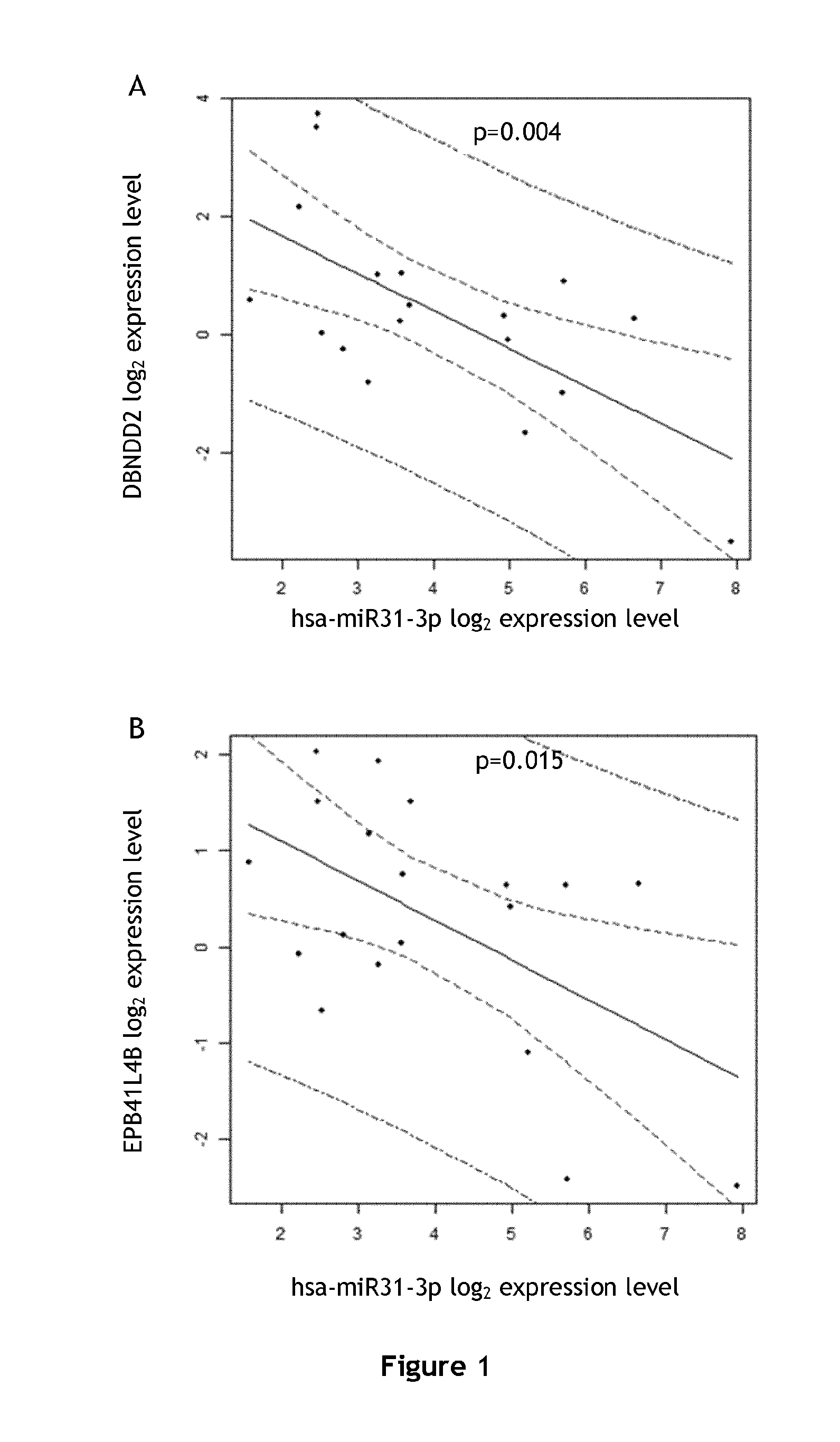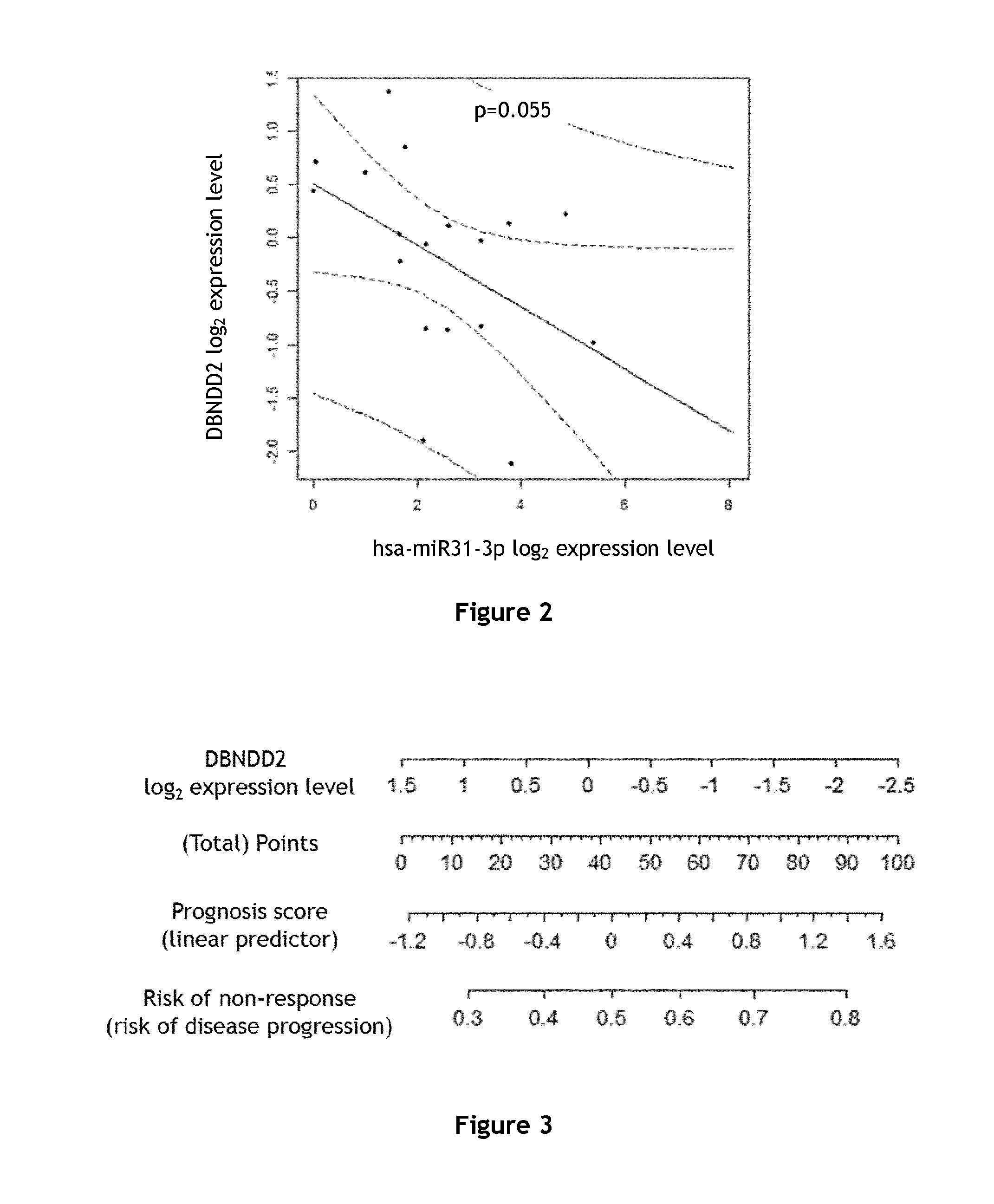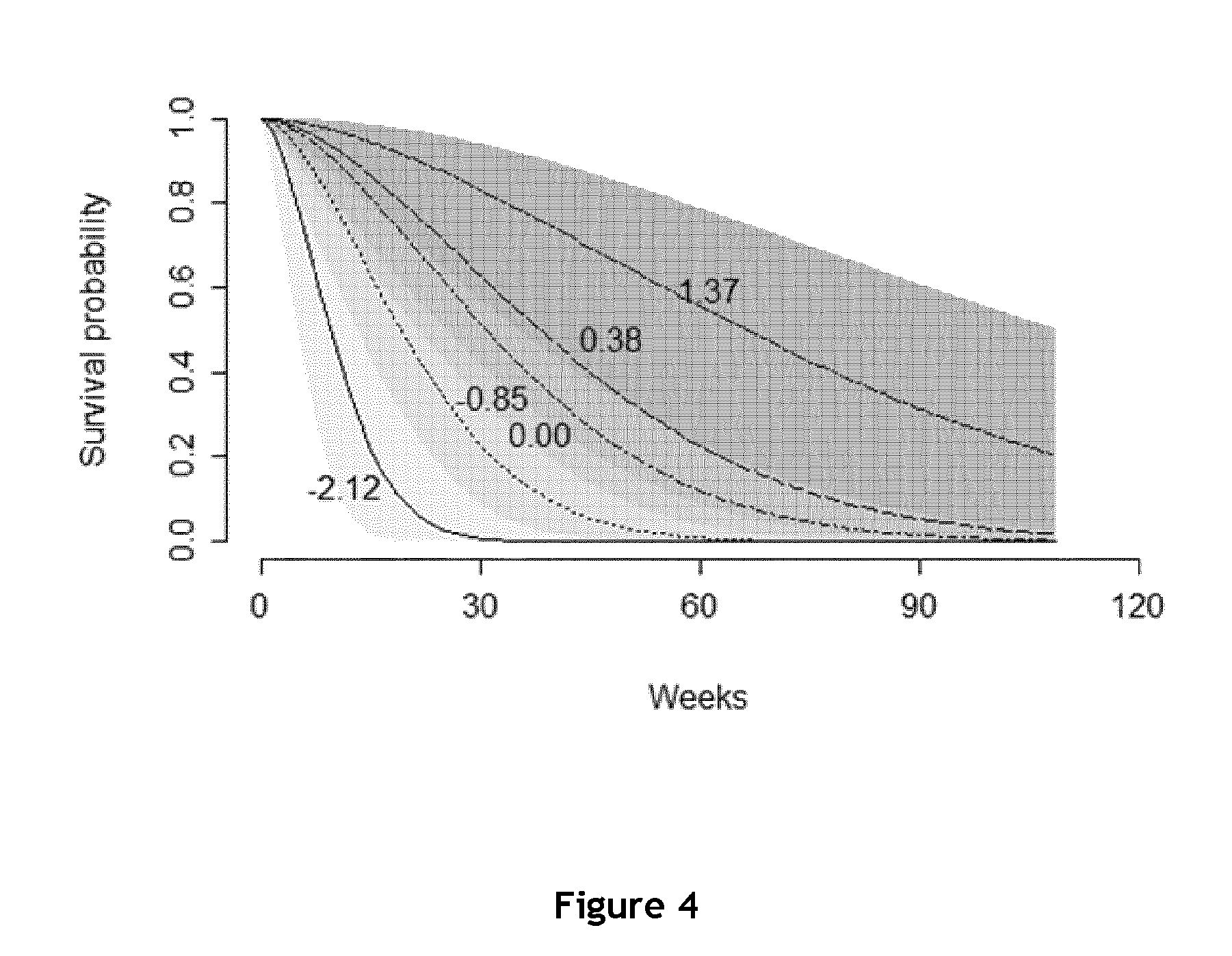A method for predicting responsiveness to a treatment with an EGFR inhibitor
a technology of egfr inhibitor and response prediction, which is applied in the field of individualizing chemotherapy for cancer treatment, can solve the problems that the association of a gene to cancer is not sufficient to reasonably expect that the gene may be used as a biomarker of response to a particular cancer treatment, and the general biomarker of prognosis may not be reasonably expected to be also biomarkers of response, so as to reduce the response to egfr inhibitor treatment and the effect of reducing the expression of targ
- Summary
- Abstract
- Description
- Claims
- Application Information
AI Technical Summary
Benefits of technology
Problems solved by technology
Method used
Image
Examples
example 1
DBNDD2 and EPB41L4B are Targets of Hsa-miR-31-3p and Independently Predict Response to EGFR Inhibitors
Patients and Methods
Patients
[0140]The set of patients was made of 20 mCRC (metastatic colorectal cancer) patients, 14 males, 6 females. The median of age was 66.49±11.9 years. All patients received a combination of irinotecan and cetuximab. The number of chemotherapy lines before the introduction of Cetuximab was recorded. The median of follow-up until progression was 20 weeks and the median overall survival was 10 months. All tumor sample came from resections and were fixed in formalin and paraffin embedded (FFPE).
Cell Culture and Transfection
[0141]We selected 3 colorectal adenocarcinoma cell lines from the American Type Culture Collection (ATCC, Manassas, Calif.) that express weakly hsa-miR-31-3p: HTB-37, CCL-222 and CCL-220-1. HTB-37 cells were maintained in a Dulbecco's Modified Eagle Medium (DMEM) culture medium with stable glutamine with 20% Fetal Bovine serum and 1% Penicilli...
example 2
Creation of a Tool with DBNDD2 and EPB41L4B Expression to Predict Response to EGFR Inhibitors
Patients and Methods
Patients
[0155]The set of patients was made of 20 mCRC patients, 13 males and 7 females. The median of age was 67±11.2 years. All had a metastatic disease at the time of the inclusion. All these patients developed a KRAS wild type metastatic colon cancer. All patients were considered refractory to a 5-fluorouracil-based regimen combined with irinotecan and oxaliplatin. They received an anti-EGFR-based chemotherapy, 8 patients with panitumumab, 10 patients with cetuximab and 2 patients received a combination of panitumumab and cetuximab. The number of chemotherapy lines before the introduction of Cetuximab and panitumumab was recorded. The median of follow-up until progression was 21 weeks and the median overall survival was 8.9 months.
Measurement of Gene Expression
[0156]qRT-PCR of DBNDD2 and EPB41L4B expression on FFPE patients samples were performed on 20 ng of total RNA ...
example 3
Replication of the Predictive Value of DBNDD2 and EPB41L4B to EGFR Inhibitors in a New and Independent Cohort
Patients and Methods
Patients
[0161]The set of patients was made of 42 mCRC (metastatic colorectal cancer) patients, 27 males and 15 females. The median of age was 59±12.1 years. All had a metastatic disease at the time of the inclusion. All patients were treated with 3rd line therapy by a combination of irinotecan and panitumumab after progression with oxaliplatin and irinotecan chemotherapy based regimens. The median of follow-up until progression was 23 weeks and the median overall survival was 9.6 months. 26 samples were available in FFPE and 16 in frozen tissue.
Measurement of Gene Expression
[0162]qRT-PCR validation of the target expression on frozen or FFPE patients samples were performed on 20 ng of total RNA using ABI7900HT Real-Time PCR System (Applied Biosystem). All reactions were performed in triplicate. Expression levels were normalized to the RNA18S or GAPDH levels...
PUM
| Property | Measurement | Unit |
|---|---|---|
| resistance | aaaaa | aaaaa |
| diameter | aaaaa | aaaaa |
| length | aaaaa | aaaaa |
Abstract
Description
Claims
Application Information
 Login to View More
Login to View More - R&D
- Intellectual Property
- Life Sciences
- Materials
- Tech Scout
- Unparalleled Data Quality
- Higher Quality Content
- 60% Fewer Hallucinations
Browse by: Latest US Patents, China's latest patents, Technical Efficacy Thesaurus, Application Domain, Technology Topic, Popular Technical Reports.
© 2025 PatSnap. All rights reserved.Legal|Privacy policy|Modern Slavery Act Transparency Statement|Sitemap|About US| Contact US: help@patsnap.com



